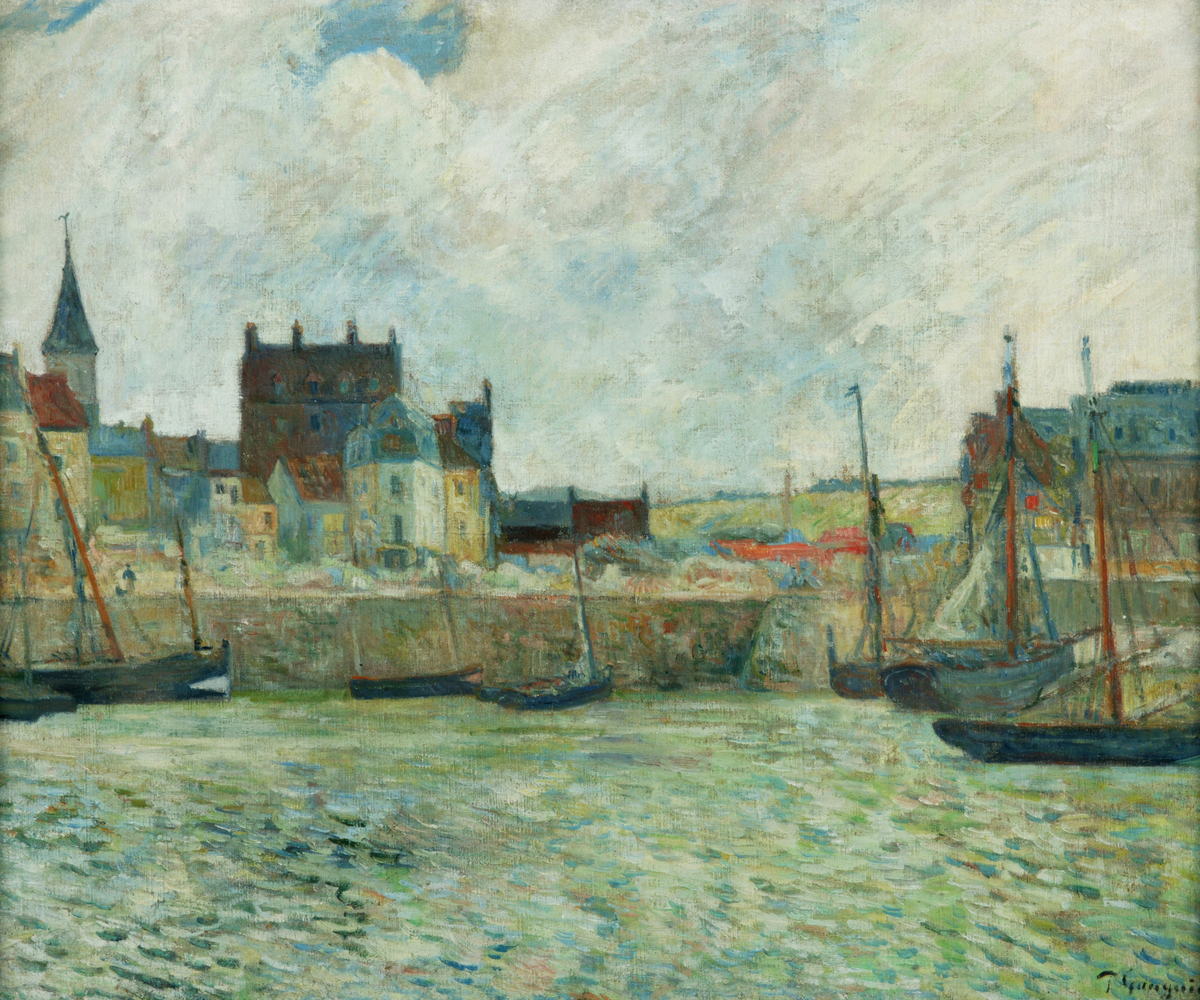Harbour Scene, Dieppe (Alternative Title: Dieppe Harbour)
Summary
Gauguin worked as a stockbroker, only turning to full-time painting in 1883 at the age of thirty-five. This is an early work, painted in the restrained impressioniste style that he favoured at that time, which owed more to Corot and Boudin, than to Monet and Pissarro. Isolated patches of vibrant colour hint at the exceptional colouration of his later work. The view is taken at half-tide from the east end of Quai Henri IV on a level with its junction with the Rue de la Rade. To the left is the spire of Nôtre Dame des Grèves, built in 1841-49. The painting just predates Gauguin's visits to Britanny, Panama and Martinique in search of a 'primitive' culture that would invigorate his art. Following a spell working alongside Van Gogh in Arles he went to Tahitii in the 1890s in a vain but productive search for an unspoilt paradise on earth, where he died.
Display Label
Channel Crossings English and French Impressionism and Post-Impressionism from the collection of Manchester Art Gallery This display looks at the allure and excitement of French art for a generation of English and Scottish painters emerging from the claustrophobia of late Victorian painting. Breaking with the Classical rigours of the Academy and the Salon, the artists who came to be known as the Impressionists painted naturalistic scenes with loose and quickly applied brushwork to convey the effects of light and the natural colours of shadows which had previously been rendered with blacks and browns. They explored the French countryside where they learned how to paint directly en plein air closely studying the changing effects of the seasons. Making regular visits to or studying in Paris, English and Scottish artists were in turn enthralled by these painterly discoveries. The new method of painting they then applied to the English landscape, to still lifes, portraits and interiors. Painters of the New English Art Club like George Clausen, John Singer Sargent and Philip Wilson Steer combined the subject matter of late Victorian genre scenes with the new style. Works by these artists and others are here shown alongside a few choice examples of French Impressionism from the collection and by the fore-runners of Impressionism; Eugène-Louis Boudin, Charles Daubigny and Johan Jongkind. While the English artists went to France the French painters and their dealers, such as Paul Durand-Ruel, escaped the Franco-Prussian war of 1870-71 and went to London. Their paintings were seen in England and some were even bought by Manchester collectors. In the Edwardian era newer developments in French art inspired English and Scottish artists on their cross-Channel trips and via a series of influential London exhibitions. The high-keyed colour and bold lines of the Post-Impressionist paintings of Paul Gauguin and Vincent Van Gogh were now huge influences on the artists of the Camden Town Group such as Harold Gilman and Charles Ginner. Later still Matthew Smith was to take his inspiration directly from Henri Matisse under whom he studied in Paris.
Object Name
Harbour Scene, Dieppe (Alternative Title: Dieppe Harbour)
Creators Name
Date Created
1885-1886
Dimensions
Canvas: 60.2cm x 72.3cm
frame: 72.5cm x 85.6cm
accession number
1944.46
Place of creation
France
Support
Canvas
Medium
oil paint
Credit
Gift of Mrs P Duxbury, 1944.
Legal
© Manchester Art Gallery

